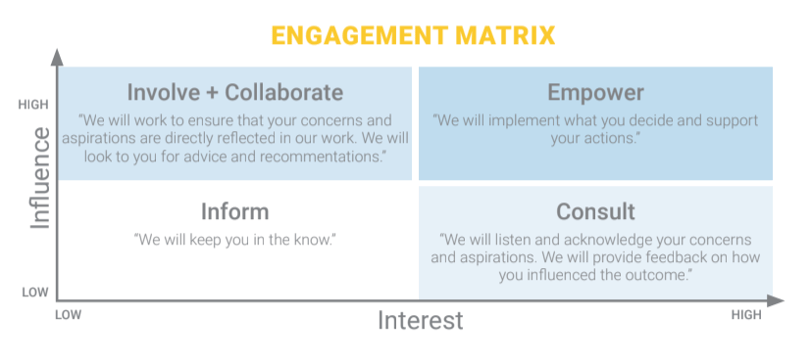At Education Elements, we pride ourselves on being a responsive organization. Like many organizations, we can fall short of true responsiveness, but we are proud of how nimble, engaged, and positive our team is as a result of responsive practices. Our true north lies in seeking feedback to best understand the experiences of our community members. Feedback, in every way it is offered, allows us to make improvements suggested by those who have a stake in the work. Obvious, right?
This may be an easy concept to grasp, but the gathering and processing of feedback from all relevant community members can be a complicated, time-consuming, and confusing process – and that’s in a small company with a team aligned around the idea. For schools and districts looking to implement change, whether it be by the introduction of new or additional technology, shifting pedagogical approaches, curriculum adoption, team reorganizations, or strategic planning, community engagement can be a paralyzingly large task.
Through our work with teachers, campus leaders, and district administrators, we have developed and refined a process for community engagement that we think can be applied to any project. Our Ultimate Guide to Strategic Planning identifies the key steps and variety of methods schools and districts can use to get input and facilitate buy-in from students, teachers, staff, parents, and other community members.

Step 1: Articulate Your Why
The first thing you and your team need to do is to clearly define the information you need, and the reason you need it. What will you do with the information you gather? Clarity on this before you get started will ensure you are using time and resources efficiently and will encourage participation from your community.
Step 2: Identify Your Community
Consider who will be impacted by the change you are considering: students, teachers, families, alumni, community members, staff, campus leaders, and district leaders are some typical groups for a school district, but, depending on your initiative, you may have different or more community groups. Be sure to consider those who you may not see or hear from often, and include them in the process.

Step 3: Plot Your Community on an Engagement Matrix
Utilizing a matrix to place your community according to interest and influence will help you determine the best approach to involve each group.

Step 4: Explore Tactics Aligned with Your Needs
Reviewing options for the different ways you can engage different groups will ensure that the time you spend developing your tools and conducting your research will have the most impact.
Whatever challenges you are tackling this school year, we hope the steps to community engagement help you better understand, serve, and connect with your entire community. In the Stakeholder Engagement Guide, you’ll find how to communicate your needs, how to identify your members, the community engagement domains to consider, as well as empathy-building activities to engage with various communities.
More Strategic Planning reading
Blog: Grading for Equity: One School’s Approach to Increasing Student Ownership and Success
Blog: Thank You Nintendo: Lessons learned that can help your strategic planning initiatives stick